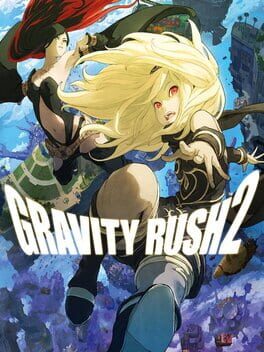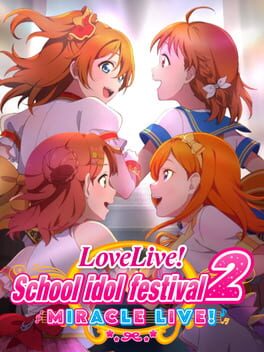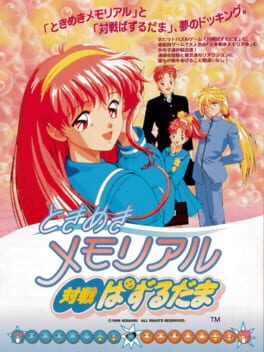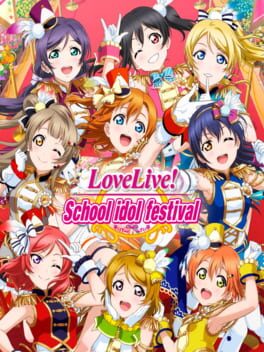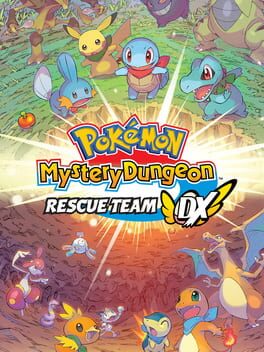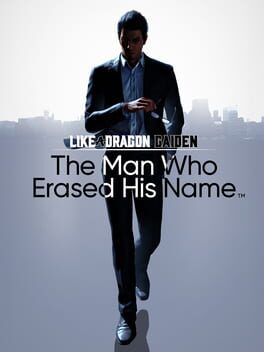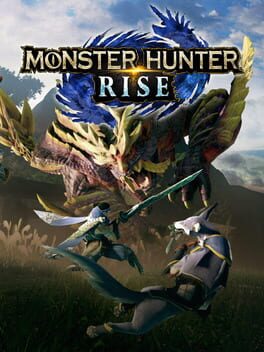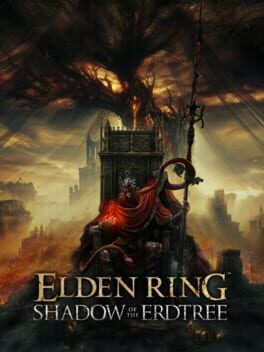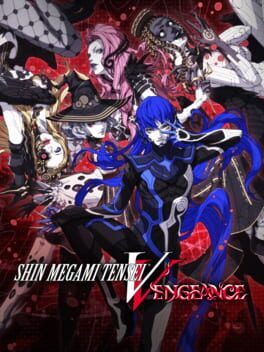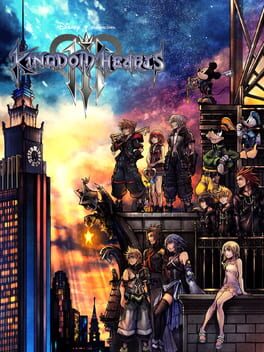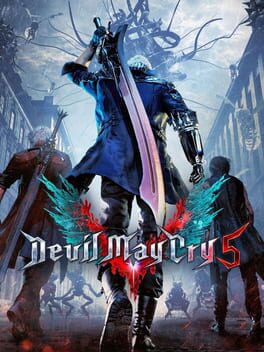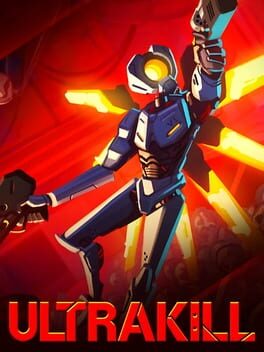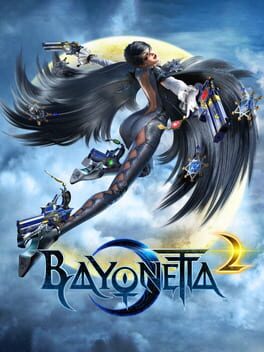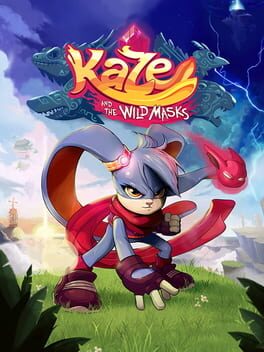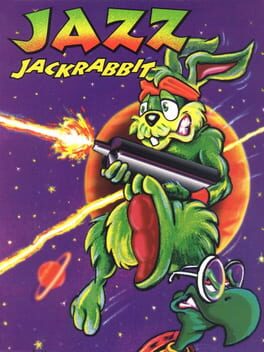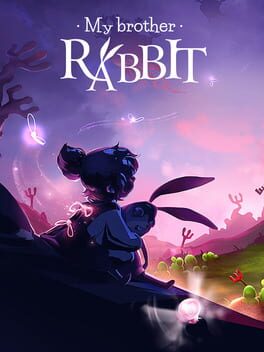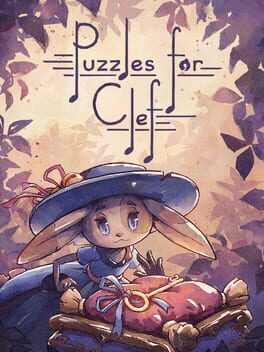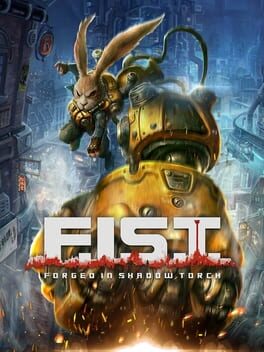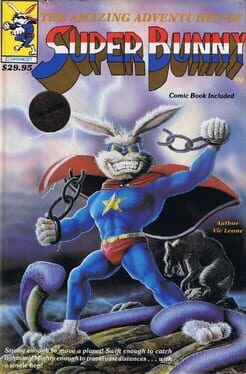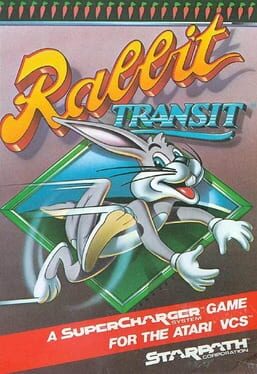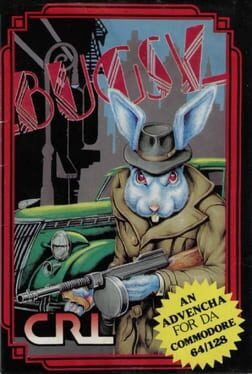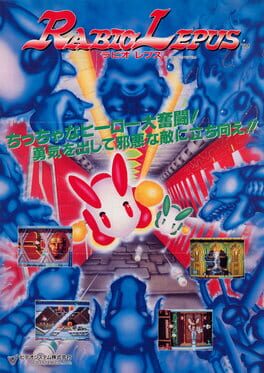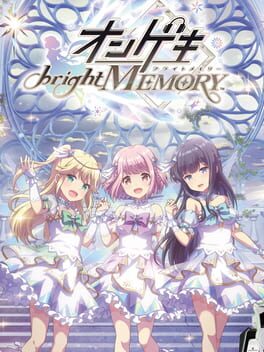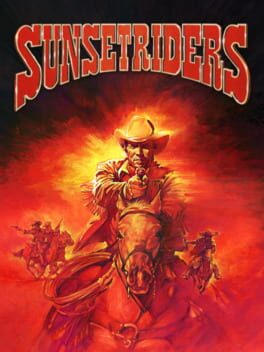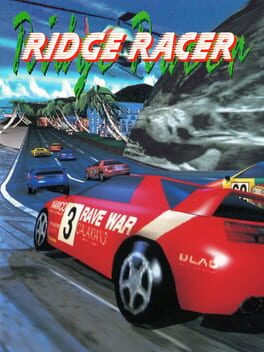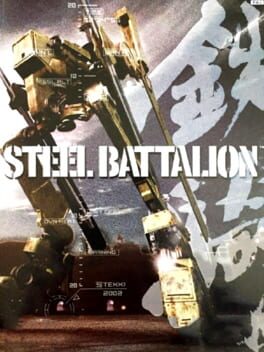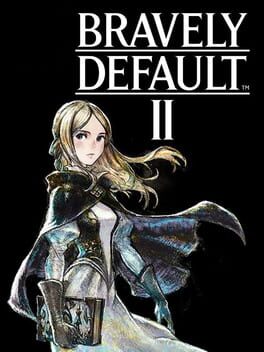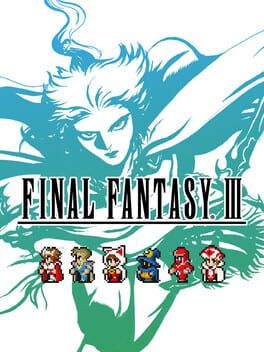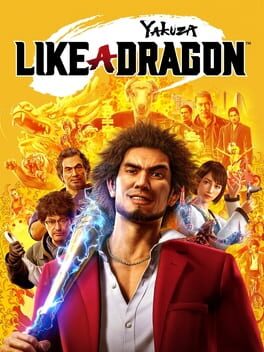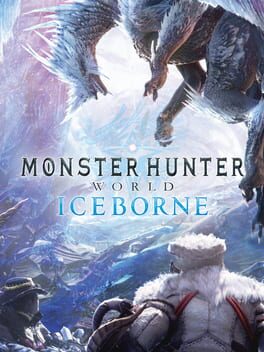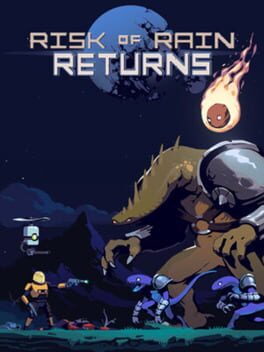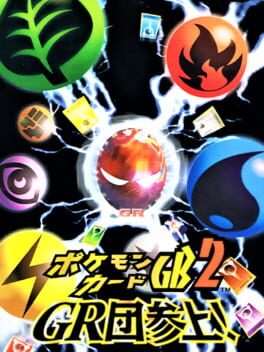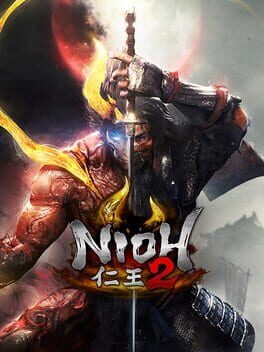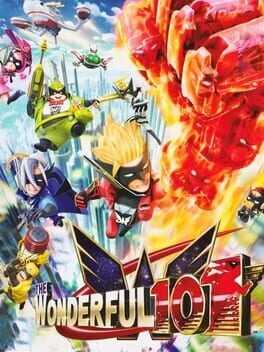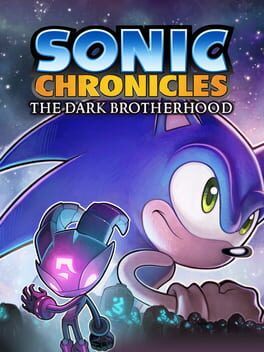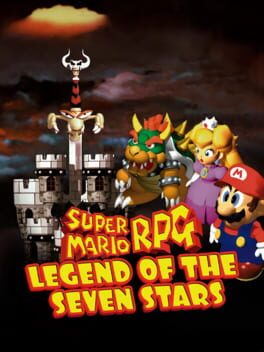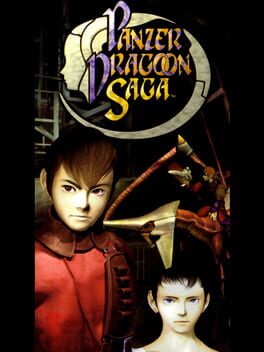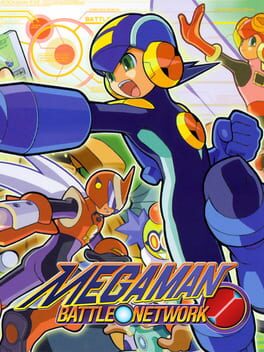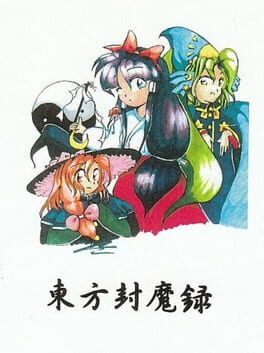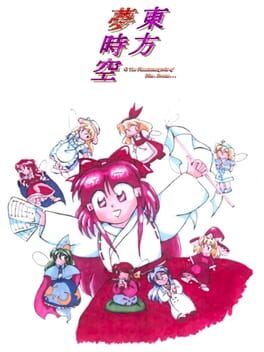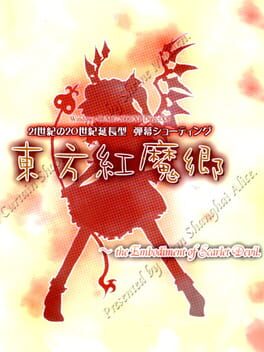coralqueenkanans
150 reviews liked by coralqueenkanans
Gravity Rush 2
2017
Not too long ago, I was asked by a friend to describe the appeal of Gravity Rush, and it took me a while to come up with an answer. Was it a twist on the classic open-world sandbox? A physics-defying superhero simulator? Both of these descriptions are reasonable to some extent, but neither felt like a perfect characterization of what kept me hooked to my favorite Sony series exclusive. Then a few days later, I stumbled upon this list, and BeachEpisode’s description caught my eye: a platformer where you “tumble through the world with an elegance of a Ghibli movie.”
Just like that, it clicked. In the same way that VVVVVV is a deconstruction of the traditional 2D platformer, Gravity Rush to me feels like the natural progression of deconstructing the open-level 3D platformer. There’s still jumping between floating platforms of course, but the jumping is deemphasized. Instead, since larger objects serving as buoys don’t have pulls towards the center of gravity, it’s up to you to shift the flow of gravity as necessary to prevent yourself from “falling off" and maintain control. Therefore, every surface becomes a possible platform, limited only by your access to said surface and your gravity energy gauge.
Since you aren’t necessarily jumping between platforms, it may be easier to characterize movement in Gravity Rush between two modes: grounded running/sliding, and soaring through the air between grounded movement. With the gravity slide, the protagonist Kat can make tight turns while also easily sliding up surfaces to maintain momentum without needing to jump and re-shift. Meanwhile, aerial movement can be thought more simply as “falling with style” (which explains why Kat’s float is less of a dive without boosting with X and closer to a derpy freefall), but is surprisingly tight; with the ability to slightly adjust your falling orientation with the left joystick, and the ability to either slowly rotate the camera with controller gyro controls or more quickly with the right joystick, the seemingly simple “flying” provides a fairly strong degree of character control. It never feels too disorienting either, because Kat’s hair will always point towards the directed flow of gravity when floating in place, and the camera will naturally rotate back towards “right-side up” from tapping R1 to stop/shift gravity (or you can tap R3 at any time to immediately snap to that perspective). As such, the real challenge is optimizing movement by juggling the two different modes to maintain momentum while never completely depleting the energy gauge. Since gravity sliding uses less energy and spending enough time not shifting gravity (including simple grounded running/waiting or natural freefall) will refresh the gauge, figuring out exactly when to insert these moments in-between gravity shifting traversal alongside collecting blue gravity tokens becomes key to efficiently getting from point A to point B. It’s a deceptively simple yet realized set of controls that can feel overwhelming at first but becomes this thing of beauty once mastered; some might call it less cool since you’re really just flail-falling about, but as an old teacher of mine once asked, isn’t flying really just missing the ground over and over again?
It's for this reason that it becomes quite frustrating that Gravity Rush 2 seems almost afraid to utilize its greatest strength during certain grounded side-missions and a few segments of main story missions. The most obvious culprits here are the forced stealth segments that will immediately catch you upon floating upwards and getting spotted by guards. It unfortunately feels rather counter-intuitive that a game emphasizing freedom of control has a few segments here and there that artificially limit your movement options. There are also quite a few grounded missions that require you to mash the square button to repeatedly talk to NPCs in hopes that they’ll point you to the right direction; definitely not great, but they’re at least over quickly enough and do end up facilitating movement around the city once you’ve got your necessary info to proceed. The absolute worst mission in my opinion however, has to be “Behind the Scenes I,” which has you running through the city on foot while dodging enthusiastic fans; NPC spawns are randomly generated, which means there’s a degree of luck getting a clear enough path and not too many NPCs to where they can’t be easily avoided or jumped over/around. I respect Team Gravity’s ambition in trying to diversify their missions and definitely appreciate the comedy behind the concept, but even I thought this one stuck out like a sore thumb.
While we’re on the topic of complaints, the other glaring complaint I often hear regarding Gravity Rush 2 is that the game feels a bit more grindy than the original title. You’re not likely to pick up many precious gems during most story missions and side missions, so most of your stock is going to come from getting gold medals in challenges and thoroughly exploring the hub areas to snag all the collectibles. Even then, you most likely won’t have enough to thoroughly upgrade all of the combat systems, which is where mining missions come in. Once unlocked, Kat can take a boat to a gravity storm mine and destroy green ore for precious gems. This process can take a while considering that environments are fairly spacious and empty, and it’s not particularly interesting repeating the same mines over and over for those final purchases. To be fair, mining missions do at least provide gravity storms that will occasionally spawn in different bosses for Kat to fight, and can also snag you talismans to augment your abilities and boost certain aspects of combat and movement. As a side note, if you really care about the trophy and don’t care much about the above, it is possible to replay old missions instead to at least get this grind out of the way.
Now, having gotten my major reservations out of the way… I actually like this way more than Gravity Rush Remastered.
The first main reason that comes to mind is that combat definitely has a lot more meat on the bone. In the original Gravity Rush, the flying kick was king; just aim and fire until everything in your path was gone, and if you miss, just keep readjusting and firing until you win anyways. Meanwhile, the sequel significantly buffs your other attack options to where combat no longer feels linearized through abusing the flying kick. Gravity sliding is much easier to implement during combat, not only due to the tighter controls but also due to the addition of a sliding dodge. Stasis Field (telekinesis to grab and throw objects) has also been buffed with a larger range than before, can be used without any temporary immobilization, and allows you to pick up enemies outright to chuck at other foes. You can also hold down the circle button when throwing to produce a piercing projectile at the expense of some of the SP gauge. Finally, Stasis Field can also be used defensively to block physical and energy-based projectiles with the proper upgrades. To tie this all together, the unlockable/farmable talismans really do make a difference in providing that extra kick to your basic abilities (ex: by dealing more damage with attacks, increasing the lock-on range of the gravity kick, decreasing the amount of gravity energy used, etc), and can later be recycled or merged for even more potent combinations of boosts.
The real crux behind the deeper combat, however, is due to the presence of additional Gravity Styles which drastically alter Kat’s abilities. For instance, Lunar Style sacrifices power in exchange for more manueverability. The wormhole kick in particular lets you zoom in on enemies (which tackles the issue I had in the original, of faster flying enemies slightly moving out of the way and causing my kick to miss entirely) and can be used to teleport across the stage. Additionally, Projectiles fired with Lunar Style create lingering hitboxes once they hit their target, which can stun-lock individual enemies and knock off armor. Jupiter Style, on the other hand, slows down Kat’s standard grounded movement but in return, adds a lot more weight to Kat’s grounded combo attacks and allows you to charge up a kick that not only deals more damage, but can also create a shockwave upon impact that can eviscerate nearby foes for better crowd control. Similarly, you can charge and fire larger projectiles in Jupiter Style to instantly wipe out bulkier enemies. These two styles also affect Kat’s traversal options. Lunar will give you access to a quick long and low rocket Jump and a charged spring Jump for height, both of which can be chained off walls to maintain momentum. Meanwhile, Jupiter Style buffs Kat’s gravity slide, by not only increasing the base speed, but also granting Kat superarmor with the relevant final upgrade while allowing Kat to quickly slide-tackle enemies. As such, switching between the different styles (including the basic Normal style) grants Gravity Rush 2’s combat a bevy of different approaches to better handle varied mobs while also adding additional depth to Kat’s movement in-between.
The next improvement surprised me; believe it or not, despite my earlier complaints towards some of the missions, I actually do think that missions on the whole have also been improved. I’ve been a bit harsh so far regarding the missions that I don’t like, but the truth is that most of these feel relatively inoffensive or at the very least, not very intrusive. Stealth missions are quickly bypassed by running past enemies, taking them out one by one, or walking on walls outside of enemy vision. Mining missions, as brought up earlier, can be mostly ignored if you’re willing to grind the aforementioned old story missions for upgrades instead (and in fact, if you don’t care about the trophy or maxing out every single stat, you’ll get enough gems and talismans for the crucial abilities from other side/main missions anyways with little detriment towards movement/combat). It also helps that upgrades to the gravity gauge and health bar have been decoupled from the gems system altogether, and will naturally be augmented from completing story and side missions (as opposed to the original, which only increased the upgrade capacity cap for completing missions), thus providing a stronger incentive to tackle all the game’s sprawling content while lessening the need to gem grind. Granted, I still can’t defend Behind the Scenes I given how many times I had to restart due to bad RNG, but it’s more of an anomaly amongst better arcadey challenges that are otherwise great at testing your combat and movement optimization.
Having said that, there are some great side missions in Gravity Rush 2 that more than make up for the duller moments. One fan-favorite is the cake delivery mission, where Kat has to deliver fragile packages with Lunar Style using plenty of spring and rocket jumps to maneuver around skyscrapers, all the while dealing with recipients begging her for “the good stuff” and dodging attacks from your voracious best friend Raven. My absolute favorite though, has to be the first movie star mission, where a non-powered Kat must play the role of Battle Nurse through the filming of various scenes; the irony of a super-powered protagonist acting as a stunt double for a superhero film without her gravity powers definitely does not escape me. Not every side mission hits of course, but the vast majority of them grant you interesting avenues to exploit Kat’s various movement and combat abilities in a different fashion, and it’s still absolutely heartwarming and adorable to see Kat stumble and bumble her way through all these absurd scenarios while helping so many others along the way; in that sense, Gravity Rush’s side missions actually remind me a ton of my recent playthrough of Yakuza 0 and all the wild sub-stories that it had to offer.
Perhaps that’s the best way to explain my love of this franchise, as I could honestly nitpick the game all day. Gravity Rush 2 suffers from a similar issue to its predecessor in that the FOV feels a bit too constrained at times, which becomes particularly noticeable when you crash into a wall and the camera gets uncomfortably close during areas with tight corridors. Special moves are a strange combination of busted and janky; the Spiraling Claw does tons of damage between enemy clusters but often gets you stuck on walls, the Gravity Typhoon is just a quickfire projectile chuck that is often detrimental in the long-run since it strips the environment of possible projectiles for Stasis Field, and both are essentially rendered obsolete by the Micro Black Hole, which will outright destroy any enemies in Kat’s vicinity. Finally, I have some problems with the pacing here and there, particularly in how the beginning is rather sluggish (without many opportunities to really abuse your gravity shifting powers) while the endgame is quite rapid-fire and blows through multiple story chapters in the course of a couple hours.
Despite all of that, I absolutely adore this game. I have to admit that I don’t really mind that most of the missions are just some combination of flying around and beating up enemies, because Team Gravity does a much better job disguising all this by slightly varying your specific tasks during missions to better facilitate the satisfying bread-and-butter movement + combat without levels feeling too rote. It helps that the core game-feel is greatly accentuated with the little touches like how the wind rumbles around you while boosting, or how falling and landing from great distances creates an earth-shattering boom that stuns you temporarily unless you land and roll with R2. So much of the world feels like it was constructed with such love and care to the point where I’m willing to overlook much of the jank and many of the dips. The environmental storytelling of all the various locales, the little bits of chaos that ensue as casualties of Kat’s gravity powers (from accidentally launching NPCs about to destroying parts of the environment from shifting and landing all over the place), the little responses here and there from other civilians when Kat makes gestures at them… there’s so many details that ultimately bring everything together. I especially appreciate being able to revisit Hekseville again from the original Gravity Rush; it was quite nostalgic catching up with all the familiar locations and characters while understanding how new events played a role into shaping subtle differences. Sure, the story takes so many twists and turns that at times you wonder if anything’s ever played straight in the first place, but there’s this undercurrent of sincerity that keeps you invested throughout the game’s entirety. The final chapter after the fake credits was the perfect way to tie this all up, resolving a lot of the resounding questions left after the ending of the original Gravity Rush while giving Kat & friends the opportunity they needed to go out with an emotional climax.
At the end of the day, there is simply nothing like the Gravity Rush series. No game before or after has ever felt this exhilarating to me, zooming around these anachronistic floating isles and kicking major ass against these shadowy creatures while having fun with friends made along the way. Even despite the missing online functionality, the core solo experience feels just that memorable to me. It’s rare that a game fills me with the same sheer sense of wonder and discovery since the first time I ever completed Okami, nonetheless while considering all the various imperfections involved. Perhaps this game is the perfect encapsulation of a Japan Studio title: an innovative spin on a classic genre that pushed its concepts to their very limits while effortlessly exuding charm. In spite of all the lack of polish here and there, Gravity Rush 2 manages to stay true to itself, and most importantly, never forgets what makes games so much fun in the first place. I’ll forever be saddened at the loss of my favorite Sony developer, because this game deserved so much more. Nevertheless, as long as red apples keep falling from the sky, the seed of hope will find a way to keep hitting us somehow.
Just like that, it clicked. In the same way that VVVVVV is a deconstruction of the traditional 2D platformer, Gravity Rush to me feels like the natural progression of deconstructing the open-level 3D platformer. There’s still jumping between floating platforms of course, but the jumping is deemphasized. Instead, since larger objects serving as buoys don’t have pulls towards the center of gravity, it’s up to you to shift the flow of gravity as necessary to prevent yourself from “falling off" and maintain control. Therefore, every surface becomes a possible platform, limited only by your access to said surface and your gravity energy gauge.
Since you aren’t necessarily jumping between platforms, it may be easier to characterize movement in Gravity Rush between two modes: grounded running/sliding, and soaring through the air between grounded movement. With the gravity slide, the protagonist Kat can make tight turns while also easily sliding up surfaces to maintain momentum without needing to jump and re-shift. Meanwhile, aerial movement can be thought more simply as “falling with style” (which explains why Kat’s float is less of a dive without boosting with X and closer to a derpy freefall), but is surprisingly tight; with the ability to slightly adjust your falling orientation with the left joystick, and the ability to either slowly rotate the camera with controller gyro controls or more quickly with the right joystick, the seemingly simple “flying” provides a fairly strong degree of character control. It never feels too disorienting either, because Kat’s hair will always point towards the directed flow of gravity when floating in place, and the camera will naturally rotate back towards “right-side up” from tapping R1 to stop/shift gravity (or you can tap R3 at any time to immediately snap to that perspective). As such, the real challenge is optimizing movement by juggling the two different modes to maintain momentum while never completely depleting the energy gauge. Since gravity sliding uses less energy and spending enough time not shifting gravity (including simple grounded running/waiting or natural freefall) will refresh the gauge, figuring out exactly when to insert these moments in-between gravity shifting traversal alongside collecting blue gravity tokens becomes key to efficiently getting from point A to point B. It’s a deceptively simple yet realized set of controls that can feel overwhelming at first but becomes this thing of beauty once mastered; some might call it less cool since you’re really just flail-falling about, but as an old teacher of mine once asked, isn’t flying really just missing the ground over and over again?
It's for this reason that it becomes quite frustrating that Gravity Rush 2 seems almost afraid to utilize its greatest strength during certain grounded side-missions and a few segments of main story missions. The most obvious culprits here are the forced stealth segments that will immediately catch you upon floating upwards and getting spotted by guards. It unfortunately feels rather counter-intuitive that a game emphasizing freedom of control has a few segments here and there that artificially limit your movement options. There are also quite a few grounded missions that require you to mash the square button to repeatedly talk to NPCs in hopes that they’ll point you to the right direction; definitely not great, but they’re at least over quickly enough and do end up facilitating movement around the city once you’ve got your necessary info to proceed. The absolute worst mission in my opinion however, has to be “Behind the Scenes I,” which has you running through the city on foot while dodging enthusiastic fans; NPC spawns are randomly generated, which means there’s a degree of luck getting a clear enough path and not too many NPCs to where they can’t be easily avoided or jumped over/around. I respect Team Gravity’s ambition in trying to diversify their missions and definitely appreciate the comedy behind the concept, but even I thought this one stuck out like a sore thumb.
While we’re on the topic of complaints, the other glaring complaint I often hear regarding Gravity Rush 2 is that the game feels a bit more grindy than the original title. You’re not likely to pick up many precious gems during most story missions and side missions, so most of your stock is going to come from getting gold medals in challenges and thoroughly exploring the hub areas to snag all the collectibles. Even then, you most likely won’t have enough to thoroughly upgrade all of the combat systems, which is where mining missions come in. Once unlocked, Kat can take a boat to a gravity storm mine and destroy green ore for precious gems. This process can take a while considering that environments are fairly spacious and empty, and it’s not particularly interesting repeating the same mines over and over for those final purchases. To be fair, mining missions do at least provide gravity storms that will occasionally spawn in different bosses for Kat to fight, and can also snag you talismans to augment your abilities and boost certain aspects of combat and movement. As a side note, if you really care about the trophy and don’t care much about the above, it is possible to replay old missions instead to at least get this grind out of the way.
Now, having gotten my major reservations out of the way… I actually like this way more than Gravity Rush Remastered.
The first main reason that comes to mind is that combat definitely has a lot more meat on the bone. In the original Gravity Rush, the flying kick was king; just aim and fire until everything in your path was gone, and if you miss, just keep readjusting and firing until you win anyways. Meanwhile, the sequel significantly buffs your other attack options to where combat no longer feels linearized through abusing the flying kick. Gravity sliding is much easier to implement during combat, not only due to the tighter controls but also due to the addition of a sliding dodge. Stasis Field (telekinesis to grab and throw objects) has also been buffed with a larger range than before, can be used without any temporary immobilization, and allows you to pick up enemies outright to chuck at other foes. You can also hold down the circle button when throwing to produce a piercing projectile at the expense of some of the SP gauge. Finally, Stasis Field can also be used defensively to block physical and energy-based projectiles with the proper upgrades. To tie this all together, the unlockable/farmable talismans really do make a difference in providing that extra kick to your basic abilities (ex: by dealing more damage with attacks, increasing the lock-on range of the gravity kick, decreasing the amount of gravity energy used, etc), and can later be recycled or merged for even more potent combinations of boosts.
The real crux behind the deeper combat, however, is due to the presence of additional Gravity Styles which drastically alter Kat’s abilities. For instance, Lunar Style sacrifices power in exchange for more manueverability. The wormhole kick in particular lets you zoom in on enemies (which tackles the issue I had in the original, of faster flying enemies slightly moving out of the way and causing my kick to miss entirely) and can be used to teleport across the stage. Additionally, Projectiles fired with Lunar Style create lingering hitboxes once they hit their target, which can stun-lock individual enemies and knock off armor. Jupiter Style, on the other hand, slows down Kat’s standard grounded movement but in return, adds a lot more weight to Kat’s grounded combo attacks and allows you to charge up a kick that not only deals more damage, but can also create a shockwave upon impact that can eviscerate nearby foes for better crowd control. Similarly, you can charge and fire larger projectiles in Jupiter Style to instantly wipe out bulkier enemies. These two styles also affect Kat’s traversal options. Lunar will give you access to a quick long and low rocket Jump and a charged spring Jump for height, both of which can be chained off walls to maintain momentum. Meanwhile, Jupiter Style buffs Kat’s gravity slide, by not only increasing the base speed, but also granting Kat superarmor with the relevant final upgrade while allowing Kat to quickly slide-tackle enemies. As such, switching between the different styles (including the basic Normal style) grants Gravity Rush 2’s combat a bevy of different approaches to better handle varied mobs while also adding additional depth to Kat’s movement in-between.
The next improvement surprised me; believe it or not, despite my earlier complaints towards some of the missions, I actually do think that missions on the whole have also been improved. I’ve been a bit harsh so far regarding the missions that I don’t like, but the truth is that most of these feel relatively inoffensive or at the very least, not very intrusive. Stealth missions are quickly bypassed by running past enemies, taking them out one by one, or walking on walls outside of enemy vision. Mining missions, as brought up earlier, can be mostly ignored if you’re willing to grind the aforementioned old story missions for upgrades instead (and in fact, if you don’t care about the trophy or maxing out every single stat, you’ll get enough gems and talismans for the crucial abilities from other side/main missions anyways with little detriment towards movement/combat). It also helps that upgrades to the gravity gauge and health bar have been decoupled from the gems system altogether, and will naturally be augmented from completing story and side missions (as opposed to the original, which only increased the upgrade capacity cap for completing missions), thus providing a stronger incentive to tackle all the game’s sprawling content while lessening the need to gem grind. Granted, I still can’t defend Behind the Scenes I given how many times I had to restart due to bad RNG, but it’s more of an anomaly amongst better arcadey challenges that are otherwise great at testing your combat and movement optimization.
Having said that, there are some great side missions in Gravity Rush 2 that more than make up for the duller moments. One fan-favorite is the cake delivery mission, where Kat has to deliver fragile packages with Lunar Style using plenty of spring and rocket jumps to maneuver around skyscrapers, all the while dealing with recipients begging her for “the good stuff” and dodging attacks from your voracious best friend Raven. My absolute favorite though, has to be the first movie star mission, where a non-powered Kat must play the role of Battle Nurse through the filming of various scenes; the irony of a super-powered protagonist acting as a stunt double for a superhero film without her gravity powers definitely does not escape me. Not every side mission hits of course, but the vast majority of them grant you interesting avenues to exploit Kat’s various movement and combat abilities in a different fashion, and it’s still absolutely heartwarming and adorable to see Kat stumble and bumble her way through all these absurd scenarios while helping so many others along the way; in that sense, Gravity Rush’s side missions actually remind me a ton of my recent playthrough of Yakuza 0 and all the wild sub-stories that it had to offer.
Perhaps that’s the best way to explain my love of this franchise, as I could honestly nitpick the game all day. Gravity Rush 2 suffers from a similar issue to its predecessor in that the FOV feels a bit too constrained at times, which becomes particularly noticeable when you crash into a wall and the camera gets uncomfortably close during areas with tight corridors. Special moves are a strange combination of busted and janky; the Spiraling Claw does tons of damage between enemy clusters but often gets you stuck on walls, the Gravity Typhoon is just a quickfire projectile chuck that is often detrimental in the long-run since it strips the environment of possible projectiles for Stasis Field, and both are essentially rendered obsolete by the Micro Black Hole, which will outright destroy any enemies in Kat’s vicinity. Finally, I have some problems with the pacing here and there, particularly in how the beginning is rather sluggish (without many opportunities to really abuse your gravity shifting powers) while the endgame is quite rapid-fire and blows through multiple story chapters in the course of a couple hours.
Despite all of that, I absolutely adore this game. I have to admit that I don’t really mind that most of the missions are just some combination of flying around and beating up enemies, because Team Gravity does a much better job disguising all this by slightly varying your specific tasks during missions to better facilitate the satisfying bread-and-butter movement + combat without levels feeling too rote. It helps that the core game-feel is greatly accentuated with the little touches like how the wind rumbles around you while boosting, or how falling and landing from great distances creates an earth-shattering boom that stuns you temporarily unless you land and roll with R2. So much of the world feels like it was constructed with such love and care to the point where I’m willing to overlook much of the jank and many of the dips. The environmental storytelling of all the various locales, the little bits of chaos that ensue as casualties of Kat’s gravity powers (from accidentally launching NPCs about to destroying parts of the environment from shifting and landing all over the place), the little responses here and there from other civilians when Kat makes gestures at them… there’s so many details that ultimately bring everything together. I especially appreciate being able to revisit Hekseville again from the original Gravity Rush; it was quite nostalgic catching up with all the familiar locations and characters while understanding how new events played a role into shaping subtle differences. Sure, the story takes so many twists and turns that at times you wonder if anything’s ever played straight in the first place, but there’s this undercurrent of sincerity that keeps you invested throughout the game’s entirety. The final chapter after the fake credits was the perfect way to tie this all up, resolving a lot of the resounding questions left after the ending of the original Gravity Rush while giving Kat & friends the opportunity they needed to go out with an emotional climax.
At the end of the day, there is simply nothing like the Gravity Rush series. No game before or after has ever felt this exhilarating to me, zooming around these anachronistic floating isles and kicking major ass against these shadowy creatures while having fun with friends made along the way. Even despite the missing online functionality, the core solo experience feels just that memorable to me. It’s rare that a game fills me with the same sheer sense of wonder and discovery since the first time I ever completed Okami, nonetheless while considering all the various imperfections involved. Perhaps this game is the perfect encapsulation of a Japan Studio title: an innovative spin on a classic genre that pushed its concepts to their very limits while effortlessly exuding charm. In spite of all the lack of polish here and there, Gravity Rush 2 manages to stay true to itself, and most importantly, never forgets what makes games so much fun in the first place. I’ll forever be saddened at the loss of my favorite Sony developer, because this game deserved so much more. Nevertheless, as long as red apples keep falling from the sky, the seed of hope will find a way to keep hitting us somehow.
Although the arcade can be only a pale imitation of the Saturn version: wow!! Some of the best presentation and writing i can imagine in a puzzle game, sullied and scrambled by the truly awful puzzle mechanics for anyone placing in more than a passing interest. Konami was pumping out TPD games at an alarming rate, and everyone was copying them, but it wasn't it. It's a cash-grab series that took an exit off the puzzle highway to a one-way dead-end road. People learned, as time passed, not to go there. I only rarely get an urge to replay a game while editing, but I find myself lusting for the progression, the characterization seeping through each scene of this game, sad as i would be to reply through the dull ball game. Each girl begins in a tokimeki state, and proceeds through a series of challenges to deliver her letter of confession to her true love. I thought during stream that the girls were fighting over the main character, but in normal mode mostly they're just hanging out, talking shit, and finding pretenses to puzzle battle. It's an honest, refreshing joy to see them pass the bechdel test with such flying colors, and I wish I could hang out with them! But taisen puzzle-dama is, at the end of the day, unhangoutitudinous.
I have a big SIF shaped hole in my heart and the recent news of SIF 2 being ported to global servers in March just for the service to be terminated in May really got to me. This was a part of life taken away from me. The events at 3 AM, the brutal rates, the simplicity of it all ...
In truth, Bushiroad really tried to milk this game for years. I don't think it was meant to be as successful as it was and by the time it hit the fifth anniversary, it was supposed to be over, yet it limped its way into the 2020s, when the idol mania had cooled off. For what it was, School Idol Festival had a good run, I saw the anime because of this game and I think idols in general got popular in the west because of this game, a first of sorts. First in gacha mechanics, first in monetization, some people forget this game came out in 2013. So, let's say goodbye to history, goodbye to my Umi Sonoda cards, but let's not forget what it was and what it brought to the table.
In truth, Bushiroad really tried to milk this game for years. I don't think it was meant to be as successful as it was and by the time it hit the fifth anniversary, it was supposed to be over, yet it limped its way into the 2020s, when the idol mania had cooled off. For what it was, School Idol Festival had a good run, I saw the anime because of this game and I think idols in general got popular in the west because of this game, a first of sorts. First in gacha mechanics, first in monetization, some people forget this game came out in 2013. So, let's say goodbye to history, goodbye to my Umi Sonoda cards, but let's not forget what it was and what it brought to the table.
Ratchet & Clank
2002
Everyone has to start somewhere right? Every person had to start with something that inspired them. Whether that be an event, maybe a tv show or film, maybe even a book, or maybe a 3D platforming shooter on the ps2. Or for me at least.
Ratchet & clank was a game born from the gods. If people were destined to do stuff, then this was the game that saw me in that direction. After insomniac lost spyro they needed a new big platforming series, so they borrowed naughty dogs engine which they used for Jak and Daxter and were able to create what would become the first ratchet game. After the release, the game would spawn a PlayStation staple franchise and specifically for this review: a boy with a small dream. But that’s for later. Let’s get onto the actual game itself.
Act 1:
Now I know I’ve reviewed this game in the past, but it certainly lacked the depth it needed, so why not give it that missing depth right now? The story sees you in control of a Lombax named ratchet. He’s alone on the desolate planet of veldin with the dream to escape and to explore other planes across the solar system. Meanwhile, there’s a malfunction in a robot making factory and the result of this is clank, a tiny robot. He finds out that an evil man named chairman drek is planning on destroying planets to create a planet for his own. Clank quickly begins to try and escape but is shot down by other bots and ends up landing in veldin. From there, he meets ratchet and clank helps him to escape the planet with the deal of finding captain qwark and putting a stop to chairman dreks plans. But before we continue the story: it’s time to go into gameplay.
Compared to future instalments, the first ratchet game isn’t as shooter heavy as its successors but it is still a core part of its gameplay. Considering the fact that before, insomniac’s only really major work were the spyro games, you can see that formula kind of applies to the first ratchet game. Even with this however, it still ends up sticking out on its own. You get a choice of 16 weapons all with different attributes. I’m not going to go too in depth about the weapons, because you can tell they were still trying to work out what works and what didn’t and believe me, the taunter is a big showcase of that. Some weapons include the decoy glove, whereby a small inflatable version of ratchet will stand and enemies will instead attack it instead of you. The suck cannon sucks up enemies and even crates which can then be launched back at enemies, this then brings me onto the next bit of gameplay.
The currency in the game is something that would still define its successors. These are bolts. These can be found by killing enemies or even finding them in smashable beige crates, or even surprisingly: bomb crates. Bolts are now explosive! There are different types of crates in the game. Those being the normal beige crates, bomb crates which explode in 3 seconds, metal crates which can only be opened through some form of explosion, and nanotech crates. Nanotech is essentially the health in the game and the crates can be found practically everywhere. Before I go in depth about the currency and its themes, let’s continue the story shall we?
Ratchet and clank end up crash landing on planet novalis but end up getting a ship from the planetary chairman (a very imaginative name) and end up finding…the plumber. The absolute legend. The crack of all jokes. But anyway. They end up going to different planets to try and find captain qwark. But just before I get onto that, I just want to take a minute and talk about another part of the gameplay.
Something that makes the first ratchet game certainly stand out is its non-linear progression. Essentially, in almost all levels you can take different paths to get to different things, these could be important items, important story beats, or just nice little bonuses. What I like about that is that, it encourages exploration and almost pushes it on the player to keep returning to places and just checking out everywhere they can. It’s a very nice bit of gameplay that I wish was continued and pushed a lot more in later ratchet games.
They end up arriving on planet kerwan whereby clank gets a heli pack upgrade and ratchet ends up getting a swingshot. To start off with, the swingshot is one of the gadgets that helps ratchet out with puzzles, these pop up all over the games and work differently to weapons as well…they don’t kill anyone. The heli pack is also an upgrade that helps give ratchet a lot more flexibility in terms of things like reaching hard to reach places. Clank ends up getting 2 other upgrades later on which help with similar things and can come in quite handy. I’ve never met anyone on this planet who hates the heli pack or thruster pack, and if someone does…do you really?
They eventually do end up finding qwark and he ends up taking them to his base on planet Umbris…however, he ends up turning out to be helping drek this entire time and leaves them to the slaughter, thankfully tho ratchet and clank make it out with their lives…but maybe not so much their friendship as clank fell for qwarks tricks. This then leads us into act 2 of the game! Oh wow!
Act 2:
So they end up getting a brand spanking new ship and end up having to try and track down qwark, however before they can…there’s a bunch of issues. For starters, they’re on the planet orxon and the air is very dangerous to breathe, so they are forced to try some form of gas mask to find the infobot and locate qwark. If you don’t know what it is, it’s essentially a small little robot that gives the coordinates of the next planet.
Also, just wanted to also talk about the themes of the game and I thought this would be an excellent time as any. So, if you’re following this I’m just wondering…have you noticed how expensive everything is? Well, you’ll never get what that is! Why it’s good old consumerism my favourite! The main theme of this game and the entire ps2 quadrilogy are obviously the satire and extreme push of consumerism. Stuff is advertised everywhere and practically nothing in the game doesn’t not come with a price. But that is the sort of genius of the writing. Everything has to come with a price and if you can’t pay it then tough shit. It gives the world an almost slightly depressing view. But I digress.
Eventually they get a gas mask from planet pokitaru and go to a bunch of other planets, including hoven where they thwart one of dreks plans…and clank hits on a girl??? This is until they eventually decide to confront qwark on the gemlick base. And oh man…this is where it gets good.
Come on, I had to mention the music at some point. The entire score was composed by David bergeaud and unfortunately he hasn’t returned to the series since quest for booty. His soundtracks in almost every ratchet game he did were excellent and fit with every planet they were inserted into. Whether it be the futuristic and busy landscape of planet kerwan or the desolate yet dangerous gemlick base, everything he composed for the game fits perfectly and encapsulates each world perfectly. It’s a shame later soundtracks wouldn’t encapsulate the same feeling the first few ratchet games did but, hey, we still have the work he did and it can still be appreciated today, if they put it in streaming services…
Act 3:
After attempting to confront qwark, they get into a fighter jet and he crashes onto the planet of oltanis. It’s at this moment when ratchet and clank decide to put aside their differences and actually defeat drek for the good of the galaxy. They try to get oltanis but clank can’t come out because of the lightning and dangerous conditions of the area. Ratchet is then forced to go on his own where he finds qwa- I mean Steve and gets the gagdetron pda…which I have to dedicate a paragraph to.
The gadgetron pda. What’s so good about this baby? It’s essentially the get yourself out of having no ammo card. You can use this thing absolutely anytime you want is essentially a portable vender. The only downside is the fact that the ammo costs more than it does at an actual vendor but who cares! If your loaded this is a perfect way of getting out of dangerous fights.
After getting an infobot, they travel to quartu, otherwise known as the robot factory from where clank was created. Clank ends up becoming giant in a pretty short section which I’m not going to go too in depth about. Essentially they end up getting another infobot for their trouble and end up making it to kalebo III to try and sneak into the robot factory in quartu. Kalebo III just happens to be the headquarters of none other than gadgetron, the company that has been selling you weapons and everything. They meet the chairman and end up having to participate in a hoverboard competition.
Hoverboarding is essentially a little racing game that you can be in. There’s only two tracks with those being in Rilgar and kalebo III. They aren’t that exciting but they certainly were for younger me, but nowadays they frustrate me as all hell. I also forgot to mention about some of the other important gadgets. Those being stuff like the grind rails which let you grind on railings (shocker), the magnet boots which let you walk on magnetic surfaces, the gas mask which I already touched upon. These not only help with puzzles but they also look really swag on ratchet.
After the competition, ratchet receives a remote that turns him into a robot. He decides to use this to his advantage and sneak into the robot factory on quartu. After doing so, they end up finding the exact place where clank was born. I’m not going to describe the scene because…I think it says everything perfectly. Afterwards however, it turns out that drek plans on destroying veldin as a sort of fuck you to ratchet. They decide to try and return to veldin immediately and stop drek in his tracks. Drek ends up revealing that he was the one that polluted his kinds homeworld and he was going to do it again on the new planet he was creating, just to make more money and repeat it over and over again. With this, ratchet and clank finally decide to take drek down once and for all.
The final battle is pretty excellent and cinematic. With the desperate attempt to try and stop drek at all costs from destroying veldin with his deplanetizer ray. Ratchet and clank end up succeeding and shoot drek to his own planet, destroying it in the process. The end shows ratchet and clank finally being really best buds and deciding to live with each other and just be…the best duo like come on.
Epilogue:
After everything…I still love this game. Of course it isn’t perfect but that’s ok. If it wasn’t for this game I probably wouldn’t reviewing different games at this very moment. This was the first game I ever played and I hold it really dear to my heart and hell even the entire franchise to my heart. The story of the first game and the themes it touches on are still perfect to this day. And whilst gameplay could’ve done with a few fixes, that’s what the other games would later help with. And even back then, I called it the game with the biggest heart, because that’s true. It was. It’s still well liked today and I honestly couldn’t thank it enough. And I can’t thank you guys enough either for sticking with me for so long!
Great gameplay, excellent story, breathtaking music, interesting selection of weapons and gadgets, and the plumber still has his cra-I mean back, thanks for the 100th review!
Ratchet & clank was a game born from the gods. If people were destined to do stuff, then this was the game that saw me in that direction. After insomniac lost spyro they needed a new big platforming series, so they borrowed naughty dogs engine which they used for Jak and Daxter and were able to create what would become the first ratchet game. After the release, the game would spawn a PlayStation staple franchise and specifically for this review: a boy with a small dream. But that’s for later. Let’s get onto the actual game itself.
Act 1:
Now I know I’ve reviewed this game in the past, but it certainly lacked the depth it needed, so why not give it that missing depth right now? The story sees you in control of a Lombax named ratchet. He’s alone on the desolate planet of veldin with the dream to escape and to explore other planes across the solar system. Meanwhile, there’s a malfunction in a robot making factory and the result of this is clank, a tiny robot. He finds out that an evil man named chairman drek is planning on destroying planets to create a planet for his own. Clank quickly begins to try and escape but is shot down by other bots and ends up landing in veldin. From there, he meets ratchet and clank helps him to escape the planet with the deal of finding captain qwark and putting a stop to chairman dreks plans. But before we continue the story: it’s time to go into gameplay.
Compared to future instalments, the first ratchet game isn’t as shooter heavy as its successors but it is still a core part of its gameplay. Considering the fact that before, insomniac’s only really major work were the spyro games, you can see that formula kind of applies to the first ratchet game. Even with this however, it still ends up sticking out on its own. You get a choice of 16 weapons all with different attributes. I’m not going to go too in depth about the weapons, because you can tell they were still trying to work out what works and what didn’t and believe me, the taunter is a big showcase of that. Some weapons include the decoy glove, whereby a small inflatable version of ratchet will stand and enemies will instead attack it instead of you. The suck cannon sucks up enemies and even crates which can then be launched back at enemies, this then brings me onto the next bit of gameplay.
The currency in the game is something that would still define its successors. These are bolts. These can be found by killing enemies or even finding them in smashable beige crates, or even surprisingly: bomb crates. Bolts are now explosive! There are different types of crates in the game. Those being the normal beige crates, bomb crates which explode in 3 seconds, metal crates which can only be opened through some form of explosion, and nanotech crates. Nanotech is essentially the health in the game and the crates can be found practically everywhere. Before I go in depth about the currency and its themes, let’s continue the story shall we?
Ratchet and clank end up crash landing on planet novalis but end up getting a ship from the planetary chairman (a very imaginative name) and end up finding…the plumber. The absolute legend. The crack of all jokes. But anyway. They end up going to different planets to try and find captain qwark. But just before I get onto that, I just want to take a minute and talk about another part of the gameplay.
Something that makes the first ratchet game certainly stand out is its non-linear progression. Essentially, in almost all levels you can take different paths to get to different things, these could be important items, important story beats, or just nice little bonuses. What I like about that is that, it encourages exploration and almost pushes it on the player to keep returning to places and just checking out everywhere they can. It’s a very nice bit of gameplay that I wish was continued and pushed a lot more in later ratchet games.
They end up arriving on planet kerwan whereby clank gets a heli pack upgrade and ratchet ends up getting a swingshot. To start off with, the swingshot is one of the gadgets that helps ratchet out with puzzles, these pop up all over the games and work differently to weapons as well…they don’t kill anyone. The heli pack is also an upgrade that helps give ratchet a lot more flexibility in terms of things like reaching hard to reach places. Clank ends up getting 2 other upgrades later on which help with similar things and can come in quite handy. I’ve never met anyone on this planet who hates the heli pack or thruster pack, and if someone does…do you really?
They eventually do end up finding qwark and he ends up taking them to his base on planet Umbris…however, he ends up turning out to be helping drek this entire time and leaves them to the slaughter, thankfully tho ratchet and clank make it out with their lives…but maybe not so much their friendship as clank fell for qwarks tricks. This then leads us into act 2 of the game! Oh wow!
Act 2:
So they end up getting a brand spanking new ship and end up having to try and track down qwark, however before they can…there’s a bunch of issues. For starters, they’re on the planet orxon and the air is very dangerous to breathe, so they are forced to try some form of gas mask to find the infobot and locate qwark. If you don’t know what it is, it’s essentially a small little robot that gives the coordinates of the next planet.
Also, just wanted to also talk about the themes of the game and I thought this would be an excellent time as any. So, if you’re following this I’m just wondering…have you noticed how expensive everything is? Well, you’ll never get what that is! Why it’s good old consumerism my favourite! The main theme of this game and the entire ps2 quadrilogy are obviously the satire and extreme push of consumerism. Stuff is advertised everywhere and practically nothing in the game doesn’t not come with a price. But that is the sort of genius of the writing. Everything has to come with a price and if you can’t pay it then tough shit. It gives the world an almost slightly depressing view. But I digress.
Eventually they get a gas mask from planet pokitaru and go to a bunch of other planets, including hoven where they thwart one of dreks plans…and clank hits on a girl??? This is until they eventually decide to confront qwark on the gemlick base. And oh man…this is where it gets good.
Come on, I had to mention the music at some point. The entire score was composed by David bergeaud and unfortunately he hasn’t returned to the series since quest for booty. His soundtracks in almost every ratchet game he did were excellent and fit with every planet they were inserted into. Whether it be the futuristic and busy landscape of planet kerwan or the desolate yet dangerous gemlick base, everything he composed for the game fits perfectly and encapsulates each world perfectly. It’s a shame later soundtracks wouldn’t encapsulate the same feeling the first few ratchet games did but, hey, we still have the work he did and it can still be appreciated today, if they put it in streaming services…
Act 3:
After attempting to confront qwark, they get into a fighter jet and he crashes onto the planet of oltanis. It’s at this moment when ratchet and clank decide to put aside their differences and actually defeat drek for the good of the galaxy. They try to get oltanis but clank can’t come out because of the lightning and dangerous conditions of the area. Ratchet is then forced to go on his own where he finds qwa- I mean Steve and gets the gagdetron pda…which I have to dedicate a paragraph to.
The gadgetron pda. What’s so good about this baby? It’s essentially the get yourself out of having no ammo card. You can use this thing absolutely anytime you want is essentially a portable vender. The only downside is the fact that the ammo costs more than it does at an actual vendor but who cares! If your loaded this is a perfect way of getting out of dangerous fights.
After getting an infobot, they travel to quartu, otherwise known as the robot factory from where clank was created. Clank ends up becoming giant in a pretty short section which I’m not going to go too in depth about. Essentially they end up getting another infobot for their trouble and end up making it to kalebo III to try and sneak into the robot factory in quartu. Kalebo III just happens to be the headquarters of none other than gadgetron, the company that has been selling you weapons and everything. They meet the chairman and end up having to participate in a hoverboard competition.
Hoverboarding is essentially a little racing game that you can be in. There’s only two tracks with those being in Rilgar and kalebo III. They aren’t that exciting but they certainly were for younger me, but nowadays they frustrate me as all hell. I also forgot to mention about some of the other important gadgets. Those being stuff like the grind rails which let you grind on railings (shocker), the magnet boots which let you walk on magnetic surfaces, the gas mask which I already touched upon. These not only help with puzzles but they also look really swag on ratchet.
After the competition, ratchet receives a remote that turns him into a robot. He decides to use this to his advantage and sneak into the robot factory on quartu. After doing so, they end up finding the exact place where clank was born. I’m not going to describe the scene because…I think it says everything perfectly. Afterwards however, it turns out that drek plans on destroying veldin as a sort of fuck you to ratchet. They decide to try and return to veldin immediately and stop drek in his tracks. Drek ends up revealing that he was the one that polluted his kinds homeworld and he was going to do it again on the new planet he was creating, just to make more money and repeat it over and over again. With this, ratchet and clank finally decide to take drek down once and for all.
The final battle is pretty excellent and cinematic. With the desperate attempt to try and stop drek at all costs from destroying veldin with his deplanetizer ray. Ratchet and clank end up succeeding and shoot drek to his own planet, destroying it in the process. The end shows ratchet and clank finally being really best buds and deciding to live with each other and just be…the best duo like come on.
Epilogue:
After everything…I still love this game. Of course it isn’t perfect but that’s ok. If it wasn’t for this game I probably wouldn’t reviewing different games at this very moment. This was the first game I ever played and I hold it really dear to my heart and hell even the entire franchise to my heart. The story of the first game and the themes it touches on are still perfect to this day. And whilst gameplay could’ve done with a few fixes, that’s what the other games would later help with. And even back then, I called it the game with the biggest heart, because that’s true. It was. It’s still well liked today and I honestly couldn’t thank it enough. And I can’t thank you guys enough either for sticking with me for so long!
Great gameplay, excellent story, breathtaking music, interesting selection of weapons and gadgets, and the plumber still has his cra-I mean back, thanks for the 100th review!
On the surface, Pokemon Mystery Dungeon: Rescue Team DX appears to be a pretty faithful remake of the original Blue and Red Rescue Team. It’s the same turn-based dungeon-crawler roguelike Pokemon battling translation that I had grew up with almost two decades ago, coupled with the same storyline and a rearranged orchestral version of the original’s DS soundtrack. Minus the lack of walkable Friend Areas, DX’s atmosphere and core gameplay mechanics seemed accurate to my previous experience of the original games at first, and thus it seemed like a forgone conclusion that I’d naturally enjoy the remake. However, the more I played through the game, the more things felt off.
Further investigation into DX’s inner workings revealed that while DX preserves the core formula of Blue Rescue Team’s structure and basic combat mechanics, much of the surrounding survival mechanics have actually been pulled from the latest iteration of PMD via Pokemon Super Mystery Dungeon on the 3DS to “modernize” the mechanics as opposed to adapting mechanics from the original games in Red/Blue Rescue Team or the DS successors in Explorers of Time/Darkness/Sky. I started noticing that in DX, the hunger mechanic felt much more prevalent; my Pokemon’s belly appeared to empty much more quickly than in the originals, and I found myself consuming an Apple every few minutes or so. There’s a variety of changes that contribute to this: the belly decreases by 1/7 of a point every action (instead of 1/10 for Blue and EoS), Max Ethers/Elixirs no longer restore BP, consuming berries & seeds only restore 2 BP as opposed to 5 in the originals, and so on. Similarly, Power Point (PP) management regarding move usage limits became far more grating in DX as opposed to the original. The obvious culprit is removing the standard attack that could be used at any time for a weaker strike that preserved PP (meaning players now have to utilize moves far more often), but to compensate for this, Spike Chunsoft had to supply the player with far more PP restoration items. However, instead of supplying them with Max Elixirs that fully restore PP for all moves used, the most common PP restoration item is now the Max Ether, which only restores PP for a single move. The optimal strategy then, is to spam the same move over and over again so you get the most bang for your buck out of using Max Ethers. Finally, weather feels much more intrusive in the remake as opposed to the originals, because DX removes the ability to naturally heal HP over time during sandstorms/hail if you’re not of a resistant type, meaning that you have to either pack a lot more Oran Berries or waste more time outside of damaging weather to heal up.
None of these changes would feel too problematic in isolation, but together, this results in DX overemphasizing its resource management in comparison to Blue Rescue Team or Explorers of Sky, meaning that overloading your toolbox with the necessary buffers or grinding in easier dungeons to stock up on said buffers is pretty much a given to succeed (especially when Apple/Sticky Traps in dungeons can further spoil your resources). I unfortunately find this shift in focus somewhat ill-fitting to a remake of Blue Rescue Team; while the structure and core gameplay remained the same, the circumstances dictating how the player had to interact with the structure changed, and thus it feels to me like the remake struggled to serve its intended purpose. Needless to say, I’m far more interested in the turn-based combat than the resource management of PMD, and DX felt far more imbalanced to where I felt like I was spending most of my time watching my health/PP/belly and menuing rather than focusing on the play-by-play.
In a broader sense, I’ve said before that Pokemon’s greatest weakness is the presence of excessive RNG and grinding. That’s not to say that these weaknesses were absent from PMD, but rather, PMD often prevailed in the face of bullshit RNG and grinding because of how the game’s structure and gameplay mechanics leaned into them. Once again though, for a remake that seemed faithful on the outside, DX regrettably makes changes that worsen the RNG and grinding to extents that were not necessarily present in the originals.
I’ll come right out and say that I’m not a fan of DX’s changes regarding team size and recruitment. Blue Rescue Team and EoS kept the max party size to four Pokemon at a time (with Blue only letting you bring in three Pokemon at a time while EoS let you bring four; if you wanted a fourth in Blue, it had to be recruited in the dungeon), but DX has a max party size of up to eight Pokemon despite only letting you bring in three recruited members. The short and thick of it is that these recruits are a necessary liability for successful runs. They’re a liability because you have to bring them back through the end of the dungeon run to permanently recruit them on your team (unlike the originals, which let you send them back immediately to base), but keeping them alive will naturally eat into your resources, and letting them faint once they’ve been temporarily recruited as a guest will cause enemy Pokemon to become “awakened” and pose an immediate threat via significant stat increases. It’s also extremely unwieldy to try and micromanage five guests at the same time, especially when you can’t give guest Pokemon exact move commands or control their tactics, and you’ll often find them getting attacked at the end of a single-file line in corridors, unable to lend a helping hand to fend off enemy ambushes. At the same time, these guests can be absolute godsends to runs: they often come with Rare Qualities that affect the entire team, such as Small Stomach (which lets you consume any seed/berry/apple and immediately fills the belly to max capacity) or Strike Back (which lowers the Attack and Special Attack stats of an enemy Pokemon, including bosses, that deals damage to your team). You can’t see what rare qualities an enemy Pokemon may have while fighting them, so it’s in your best interest to recruit as many guests as possible in hopes of getting more Rare Qualities to bolster your team. Essentially, this is yet another resource grind that’s present only in the remake. At best, getting the Rare Quality recruits you need is extremely time-consuming and luck-based, but at least lets you steamroll boss fights. At worst, not getting the Rare Quality recruits you need feels like an active detriment when you’re running low on supplies and the dungeon isn’t giving you the item drops you need to survive.
Perhaps this resource grind would be more forgivable if the level scaling were up to par, but as it stands, I find enemy XP drops during the main game to be rather lacking. You’ll have to stick around and roam entire floors to sufficiently scale up with the enemy Pokemon level increases as the story progresses, and that’s often not the best idea when you’ve only got limited resources in your toolbox to manage HP/PP/BP and you’ll likely end up spotting the stairs before mapping out the entire floor. The best way then, is to train in Makuhita Dojo. This too, has been drastically altered from the original. Instead of challenge-room type and boss mazes, the dojo has been repurposed into a straight XP grindfest. You now have to spend limited tickets to defeat as many enemy Pokemon as you can in a real-time limit (i.e. a Bronze Dojo Ticket gives you 50 seconds of real time), and because experience is significantly multiplied both by the ticket itself (3x for Bronze, 5x for Silver, 7x for Gold) and by using super effective attacks, it’s simply too good to pass up considering the meager XP earnings from story dungeons. Unfortunately, this is also extremely tedious due to the time limits, as excess animations from randomly doubling attacks or outright missing attacks/failing to OHKO from random enemy buffs feels particularly punishing when Dojo tickets are a limited commodity that have to be scored as job rewards or randomly from dungeon treasure chests/mail. It also doesn’t help that the ticket allocation itself is not scaled: you’ll still be receiving Bronze tickets far into the post-game when you’ll likely need to use up 3 or more tickets to level-up, and you can only use one ticket at a time instead of stacking time limits. The result then, is that Makuhita’s dojo outright breaks the difficulty curve of the game: I found myself significantly overleveled during the main story using it, but after the significant difficulty spike during the post-game, it failed to provide much benefit for my main team since I was inundated with Bronze/Silver tickets and thus led to even more time spent grinding both in and outside of dungeons.
Gummis have also been reworked in DX, and are a slight improvement over the original, yet aren't completely rectified. Gummi grinding was likely the weakest aspect of the original games: you needed them to level up the IQ of each individual Pokemon for basic skills such as not stepping on visible traps and not using status moves on Pokemon that have already been statused. Fortunately, these IQ skills have been entirely removed and as a result the AI has been improved significantly: you no longer have to micromanage every single member of your team to avoid making silly mistakes, and in fact teammates can aid you subtly like positioning themselves to target ranged enemies or deviating slightly from the path to pick up floor objects so the leader doesn’t have to pick up every object themselves. That said, gummies still serve a purpose, because they provide random permanent stat boosts (invaluable when level-ups are often just a simple +1 to all stats) and they’re the only way to add/change Rare Qualities attached to your team members. Obtaining gummis is actually more obnoxious than even the original games, because just like Dojo Tickets, they can only be obtained via job rewards or found randomly in treasure chests, and you’ll often need to run through a few just to get the right Rare Quality for a specific team member (or a Rare Quality at all, because Rainbow Gummis are not guaranteed to give a Rare Quality). At least in the original games, you could obtain Gummis as random item drops on dungeon floors.
The above three changes basically represent a trend of changing aspects from the original in a way that left something to be desired, and lead me to believe that the remake is somewhat misguided. It’s quite confusing: sometimes there are obvious improvements, like expanding the toolbox capacity from 20 to 48 (carrying this from Explorers of Time/Darkness forward) and adding in all evolution lines for Pokemon from Generations 1-3 + bringing in new moves that have been added since Gen 8, but then sometimes the game feels far more punishing than difficult in a way that the original never did, like how fainting in dungeons now makes you lose all of your money and items (whereas you’d only lose half of your items in the DS originals and at least in EoS, only lose half of your money), so you really better hope you’ve got the resources to rescue yourself with a second team or someone online spots your request promptly.
What is more damning though, is that for as many things as they did change, there’s a lot of not great things about the original that I’d argue they should have changed/improved upon but didn’t (or at the very least, didn't improve upon enough), such as the aforementioned issue of gummi grinding Ironically, the qualities left in from the original are what led me to realize that Blue/Red Rescue Team are more flawed than I had originally remembered. For example, the original wasn’t great at pacing either (I found myself equally bored in the main-game at times, forced to grind during one particular story-heavy section where I was limited to my protagonist + partner), but I think it was more forgivable at the time given that it was the debut of the series and was greatly improved upon in Explorers of Time/Darkness/Sky. DX feels far more egregious in context now that I have several points of comparison, for not fixing a lot of the grinding/RNG issues of the original (and in fact exacerbating a few of them) and transitioning the at-least involved main-story into an underwhelming post-game narrative, of which 80% can be summed up as “fight this powerful Pokemon because you can.” Take this with a grain of salt since my point of view is colored from extensively playing the original (albeit, almost a decade and a half ago), but I unfortunately found my time spent during the main story to be quite forgettable (as I breezed through the dungeons with little difficulty) and a good chunk of the post-game to be aggravatingly tedious while I scaled up my team to better deal with the far more competent foes and spongier bosses.
I suppose I did eventually come around on the post-game nevertheless, considering that at the time of writing I’ve now logged just over sixty hours on my save file. It’s a pity that it took hours of forgettable missions and grinding (instead of the game adequately scaling my gains throughout the story’s runtime) to get to that point and that my satisfaction was in spite of rather than as a result of the altered resource management (since these elements become minimal once you have the right Rare Qualities and a stockpile of Perfect Apples/Max Elixirs to throw at the problem), but a few of the game’s climatic dungeons really do bring out the best qualities of PMD’s gameplay. One dungeon that stands out is Meteor Cave: in it, you are constantly assaulted by infinite waves of different Deoxys forms that force you to consider the totality of your actions, considering each form has significantly stratified stats/moves that must be dealt with promptly before you run out of resources due to Pressure doubling your PP usage. In just twenty floors, this dungeon where you cannot be rescued challenged me in ways that Silver Trench couldn’t do in ninety-nine. This isn’t even my favorite dungeon in the game though: surprisingly, that title goes to Purity Forest. Considered by many to be the toughest dungeon in the game, Purity Forest drops you in with no items, no Poke, and only one team member, resetting your level to five and forcing you to fight and earn your way out to even hope to survive against fully evolved Pokemon by the end of your run. The caveat to my final hours savored in the game was that I had to slog through multiple other ninety-nine floor dungeons around the same time as tackling Purity Forest (and it doesn’t help that two of them, Wish Cave and Joyous Tower, are basically Purity Forest Jr since the only differences are that Wish Cave lets you bring items + teammates and Joyous Tower only lets you bring teammates), but ultimately, I can at least say I finished my run on a high note, even if I felt like my run was diluted somewhat by the lackluster pacing and never quite hit the perfect difficulty until the very end.
So the big question remains: do I recommend Rescue Team DX? While I ultimately got some enjoyment out of the game, I'm conflicted regarding its overall quality and lean towards no. All things considered, I don’t really know what audience this game appeals to or if it even excels in any particular category. Newbies will likely find this game too hard and too grindy during the main story, while veterans will likely find this game initially too easy and too grindy during the post-game. DX introduces enough quality-of-life changes, but it also doesn’t change certain exasperating elements from the original (or in some cases, outright fumbles the bag) and makes me question if the remake was necessary in the first place. The climactic gameplay, once the player gets past any resource and leveling barriers, is fantastic, but as I’ve mentioned earlier, is dragged down by a layer of RNG and grinding that often feels more tedious than challenging. Finally, I'd say that the story’s adequate given its time, but it can’t hold a candle to the emotional peaks reached by Explorers of Sky (due in part to Sky’s side stories).
If anything, my time with DX has confirmed that I see modern Pokemon games far differently than I once did as a kid. Obvious statements aside, I find that I tend to view the newer Pokemon games (of the ones I’ve played anyways, as I only have a few hours in Sword/Shield and haven’t touched Scarlet/Violet) more as sandboxes than well-rounded experiences. Granted, it might be a little unfair to assign this to a remake of a 2005 DS/GBA game, and it doesn’t even sound like a significant issue at first given that I’m usually able to dig deep and find the player motivation to thoroughly approach games on their own terms. That said, I would also say that there was once a time where Pokemon games excelled in both world-building/atmosphere and gameplay (Explorers of Sky being the obvious candidate), and as such it’s hard to see DX as anything but a personal disappointment at best. Even so, it might not be my ideal experience, but I’m still glad that others were able to fully savor what DX brings to the table even if I’m stuck in the past reminiscing about the glory days of PMD, and that’s okay too.
Further investigation into DX’s inner workings revealed that while DX preserves the core formula of Blue Rescue Team’s structure and basic combat mechanics, much of the surrounding survival mechanics have actually been pulled from the latest iteration of PMD via Pokemon Super Mystery Dungeon on the 3DS to “modernize” the mechanics as opposed to adapting mechanics from the original games in Red/Blue Rescue Team or the DS successors in Explorers of Time/Darkness/Sky. I started noticing that in DX, the hunger mechanic felt much more prevalent; my Pokemon’s belly appeared to empty much more quickly than in the originals, and I found myself consuming an Apple every few minutes or so. There’s a variety of changes that contribute to this: the belly decreases by 1/7 of a point every action (instead of 1/10 for Blue and EoS), Max Ethers/Elixirs no longer restore BP, consuming berries & seeds only restore 2 BP as opposed to 5 in the originals, and so on. Similarly, Power Point (PP) management regarding move usage limits became far more grating in DX as opposed to the original. The obvious culprit is removing the standard attack that could be used at any time for a weaker strike that preserved PP (meaning players now have to utilize moves far more often), but to compensate for this, Spike Chunsoft had to supply the player with far more PP restoration items. However, instead of supplying them with Max Elixirs that fully restore PP for all moves used, the most common PP restoration item is now the Max Ether, which only restores PP for a single move. The optimal strategy then, is to spam the same move over and over again so you get the most bang for your buck out of using Max Ethers. Finally, weather feels much more intrusive in the remake as opposed to the originals, because DX removes the ability to naturally heal HP over time during sandstorms/hail if you’re not of a resistant type, meaning that you have to either pack a lot more Oran Berries or waste more time outside of damaging weather to heal up.
None of these changes would feel too problematic in isolation, but together, this results in DX overemphasizing its resource management in comparison to Blue Rescue Team or Explorers of Sky, meaning that overloading your toolbox with the necessary buffers or grinding in easier dungeons to stock up on said buffers is pretty much a given to succeed (especially when Apple/Sticky Traps in dungeons can further spoil your resources). I unfortunately find this shift in focus somewhat ill-fitting to a remake of Blue Rescue Team; while the structure and core gameplay remained the same, the circumstances dictating how the player had to interact with the structure changed, and thus it feels to me like the remake struggled to serve its intended purpose. Needless to say, I’m far more interested in the turn-based combat than the resource management of PMD, and DX felt far more imbalanced to where I felt like I was spending most of my time watching my health/PP/belly and menuing rather than focusing on the play-by-play.
In a broader sense, I’ve said before that Pokemon’s greatest weakness is the presence of excessive RNG and grinding. That’s not to say that these weaknesses were absent from PMD, but rather, PMD often prevailed in the face of bullshit RNG and grinding because of how the game’s structure and gameplay mechanics leaned into them. Once again though, for a remake that seemed faithful on the outside, DX regrettably makes changes that worsen the RNG and grinding to extents that were not necessarily present in the originals.
I’ll come right out and say that I’m not a fan of DX’s changes regarding team size and recruitment. Blue Rescue Team and EoS kept the max party size to four Pokemon at a time (with Blue only letting you bring in three Pokemon at a time while EoS let you bring four; if you wanted a fourth in Blue, it had to be recruited in the dungeon), but DX has a max party size of up to eight Pokemon despite only letting you bring in three recruited members. The short and thick of it is that these recruits are a necessary liability for successful runs. They’re a liability because you have to bring them back through the end of the dungeon run to permanently recruit them on your team (unlike the originals, which let you send them back immediately to base), but keeping them alive will naturally eat into your resources, and letting them faint once they’ve been temporarily recruited as a guest will cause enemy Pokemon to become “awakened” and pose an immediate threat via significant stat increases. It’s also extremely unwieldy to try and micromanage five guests at the same time, especially when you can’t give guest Pokemon exact move commands or control their tactics, and you’ll often find them getting attacked at the end of a single-file line in corridors, unable to lend a helping hand to fend off enemy ambushes. At the same time, these guests can be absolute godsends to runs: they often come with Rare Qualities that affect the entire team, such as Small Stomach (which lets you consume any seed/berry/apple and immediately fills the belly to max capacity) or Strike Back (which lowers the Attack and Special Attack stats of an enemy Pokemon, including bosses, that deals damage to your team). You can’t see what rare qualities an enemy Pokemon may have while fighting them, so it’s in your best interest to recruit as many guests as possible in hopes of getting more Rare Qualities to bolster your team. Essentially, this is yet another resource grind that’s present only in the remake. At best, getting the Rare Quality recruits you need is extremely time-consuming and luck-based, but at least lets you steamroll boss fights. At worst, not getting the Rare Quality recruits you need feels like an active detriment when you’re running low on supplies and the dungeon isn’t giving you the item drops you need to survive.
Perhaps this resource grind would be more forgivable if the level scaling were up to par, but as it stands, I find enemy XP drops during the main game to be rather lacking. You’ll have to stick around and roam entire floors to sufficiently scale up with the enemy Pokemon level increases as the story progresses, and that’s often not the best idea when you’ve only got limited resources in your toolbox to manage HP/PP/BP and you’ll likely end up spotting the stairs before mapping out the entire floor. The best way then, is to train in Makuhita Dojo. This too, has been drastically altered from the original. Instead of challenge-room type and boss mazes, the dojo has been repurposed into a straight XP grindfest. You now have to spend limited tickets to defeat as many enemy Pokemon as you can in a real-time limit (i.e. a Bronze Dojo Ticket gives you 50 seconds of real time), and because experience is significantly multiplied both by the ticket itself (3x for Bronze, 5x for Silver, 7x for Gold) and by using super effective attacks, it’s simply too good to pass up considering the meager XP earnings from story dungeons. Unfortunately, this is also extremely tedious due to the time limits, as excess animations from randomly doubling attacks or outright missing attacks/failing to OHKO from random enemy buffs feels particularly punishing when Dojo tickets are a limited commodity that have to be scored as job rewards or randomly from dungeon treasure chests/mail. It also doesn’t help that the ticket allocation itself is not scaled: you’ll still be receiving Bronze tickets far into the post-game when you’ll likely need to use up 3 or more tickets to level-up, and you can only use one ticket at a time instead of stacking time limits. The result then, is that Makuhita’s dojo outright breaks the difficulty curve of the game: I found myself significantly overleveled during the main story using it, but after the significant difficulty spike during the post-game, it failed to provide much benefit for my main team since I was inundated with Bronze/Silver tickets and thus led to even more time spent grinding both in and outside of dungeons.
Gummis have also been reworked in DX, and are a slight improvement over the original, yet aren't completely rectified. Gummi grinding was likely the weakest aspect of the original games: you needed them to level up the IQ of each individual Pokemon for basic skills such as not stepping on visible traps and not using status moves on Pokemon that have already been statused. Fortunately, these IQ skills have been entirely removed and as a result the AI has been improved significantly: you no longer have to micromanage every single member of your team to avoid making silly mistakes, and in fact teammates can aid you subtly like positioning themselves to target ranged enemies or deviating slightly from the path to pick up floor objects so the leader doesn’t have to pick up every object themselves. That said, gummies still serve a purpose, because they provide random permanent stat boosts (invaluable when level-ups are often just a simple +1 to all stats) and they’re the only way to add/change Rare Qualities attached to your team members. Obtaining gummis is actually more obnoxious than even the original games, because just like Dojo Tickets, they can only be obtained via job rewards or found randomly in treasure chests, and you’ll often need to run through a few just to get the right Rare Quality for a specific team member (or a Rare Quality at all, because Rainbow Gummis are not guaranteed to give a Rare Quality). At least in the original games, you could obtain Gummis as random item drops on dungeon floors.
The above three changes basically represent a trend of changing aspects from the original in a way that left something to be desired, and lead me to believe that the remake is somewhat misguided. It’s quite confusing: sometimes there are obvious improvements, like expanding the toolbox capacity from 20 to 48 (carrying this from Explorers of Time/Darkness forward) and adding in all evolution lines for Pokemon from Generations 1-3 + bringing in new moves that have been added since Gen 8, but then sometimes the game feels far more punishing than difficult in a way that the original never did, like how fainting in dungeons now makes you lose all of your money and items (whereas you’d only lose half of your items in the DS originals and at least in EoS, only lose half of your money), so you really better hope you’ve got the resources to rescue yourself with a second team or someone online spots your request promptly.
What is more damning though, is that for as many things as they did change, there’s a lot of not great things about the original that I’d argue they should have changed/improved upon but didn’t (or at the very least, didn't improve upon enough), such as the aforementioned issue of gummi grinding Ironically, the qualities left in from the original are what led me to realize that Blue/Red Rescue Team are more flawed than I had originally remembered. For example, the original wasn’t great at pacing either (I found myself equally bored in the main-game at times, forced to grind during one particular story-heavy section where I was limited to my protagonist + partner), but I think it was more forgivable at the time given that it was the debut of the series and was greatly improved upon in Explorers of Time/Darkness/Sky. DX feels far more egregious in context now that I have several points of comparison, for not fixing a lot of the grinding/RNG issues of the original (and in fact exacerbating a few of them) and transitioning the at-least involved main-story into an underwhelming post-game narrative, of which 80% can be summed up as “fight this powerful Pokemon because you can.” Take this with a grain of salt since my point of view is colored from extensively playing the original (albeit, almost a decade and a half ago), but I unfortunately found my time spent during the main story to be quite forgettable (as I breezed through the dungeons with little difficulty) and a good chunk of the post-game to be aggravatingly tedious while I scaled up my team to better deal with the far more competent foes and spongier bosses.
I suppose I did eventually come around on the post-game nevertheless, considering that at the time of writing I’ve now logged just over sixty hours on my save file. It’s a pity that it took hours of forgettable missions and grinding (instead of the game adequately scaling my gains throughout the story’s runtime) to get to that point and that my satisfaction was in spite of rather than as a result of the altered resource management (since these elements become minimal once you have the right Rare Qualities and a stockpile of Perfect Apples/Max Elixirs to throw at the problem), but a few of the game’s climatic dungeons really do bring out the best qualities of PMD’s gameplay. One dungeon that stands out is Meteor Cave: in it, you are constantly assaulted by infinite waves of different Deoxys forms that force you to consider the totality of your actions, considering each form has significantly stratified stats/moves that must be dealt with promptly before you run out of resources due to Pressure doubling your PP usage. In just twenty floors, this dungeon where you cannot be rescued challenged me in ways that Silver Trench couldn’t do in ninety-nine. This isn’t even my favorite dungeon in the game though: surprisingly, that title goes to Purity Forest. Considered by many to be the toughest dungeon in the game, Purity Forest drops you in with no items, no Poke, and only one team member, resetting your level to five and forcing you to fight and earn your way out to even hope to survive against fully evolved Pokemon by the end of your run. The caveat to my final hours savored in the game was that I had to slog through multiple other ninety-nine floor dungeons around the same time as tackling Purity Forest (and it doesn’t help that two of them, Wish Cave and Joyous Tower, are basically Purity Forest Jr since the only differences are that Wish Cave lets you bring items + teammates and Joyous Tower only lets you bring teammates), but ultimately, I can at least say I finished my run on a high note, even if I felt like my run was diluted somewhat by the lackluster pacing and never quite hit the perfect difficulty until the very end.
So the big question remains: do I recommend Rescue Team DX? While I ultimately got some enjoyment out of the game, I'm conflicted regarding its overall quality and lean towards no. All things considered, I don’t really know what audience this game appeals to or if it even excels in any particular category. Newbies will likely find this game too hard and too grindy during the main story, while veterans will likely find this game initially too easy and too grindy during the post-game. DX introduces enough quality-of-life changes, but it also doesn’t change certain exasperating elements from the original (or in some cases, outright fumbles the bag) and makes me question if the remake was necessary in the first place. The climactic gameplay, once the player gets past any resource and leveling barriers, is fantastic, but as I’ve mentioned earlier, is dragged down by a layer of RNG and grinding that often feels more tedious than challenging. Finally, I'd say that the story’s adequate given its time, but it can’t hold a candle to the emotional peaks reached by Explorers of Sky (due in part to Sky’s side stories).
If anything, my time with DX has confirmed that I see modern Pokemon games far differently than I once did as a kid. Obvious statements aside, I find that I tend to view the newer Pokemon games (of the ones I’ve played anyways, as I only have a few hours in Sword/Shield and haven’t touched Scarlet/Violet) more as sandboxes than well-rounded experiences. Granted, it might be a little unfair to assign this to a remake of a 2005 DS/GBA game, and it doesn’t even sound like a significant issue at first given that I’m usually able to dig deep and find the player motivation to thoroughly approach games on their own terms. That said, I would also say that there was once a time where Pokemon games excelled in both world-building/atmosphere and gameplay (Explorers of Sky being the obvious candidate), and as such it’s hard to see DX as anything but a personal disappointment at best. Even so, it might not be my ideal experience, but I’m still glad that others were able to fully savor what DX brings to the table even if I’m stuck in the past reminiscing about the glory days of PMD, and that’s okay too.
36 lists liked by coralqueenkanans
by AlphaOne2 |
10 Games
by AlphaOne2 |
7 Games
by ImaginaryVoices |
82 Games
by Clorth |
232 Games
by Pangburn |
4 Games
by AlphaOne2 |
26 Games
by ProudLittleSeal |
39 Games
by FallenGrace |
32 Games
by TransWitchSammy |
80 Games
